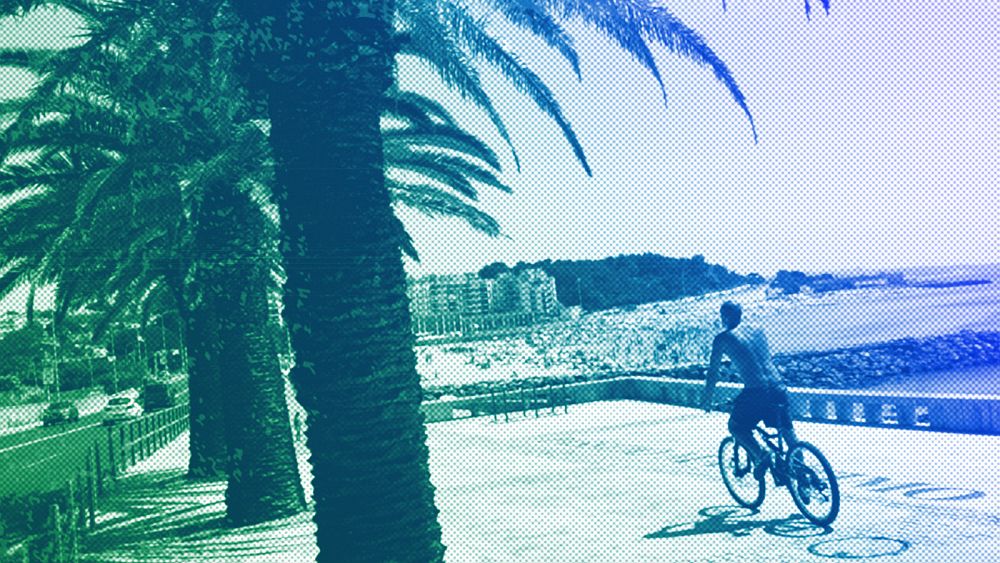European tourism has lost its charm.
Take Venice, the city that floats. Once serene and impossibly romantic. Now, overrun by loud, phone-wielding tourists shuffling through Le Mercerie.
“Venice,” Woody Allen said, “is the most romantic place in the world but it’s even better when there is no one around.” In the era of post-pandemic travel fever, buoyed by the rise of ultra-low-cost airlines, there is never, ever, no one around.
The same is true of most big European cities nowadays.
Barcelona’s beaches are shoulder-to-shoulder crowded. In Brussels, Belgian fries with a modest squirt of mayonnaise run about €7.50 and 20 minutes in the queue.
In Dublin’s Temple Bar, the price of a pint of Guinness borders on extortion. The Vatican is one never-ending assembly line that plods from the entrance to the Sistine Chapel.
And, if you dare stop to admire the cobbled alleyways of Lisbon’s Alfama district, you will be subject to a symphony of solicitations for water, cold beer, hashish and cocaine.
Fortunately, there is a better way. You can, almost regardless of your age and fitness level, comfortably walk or cycle through much of Europe.
Doing so will save you a fortune and deliver an authentic hit of culture, unsullied by crowds, souvenir shops and the dreaded “tourist menu”. Of course, travelling this way is also better for the environment and your health.
Last week, I cycled from London to Brussels. Three countries, with a stopover in France, in three days. No training was required for this adventure, and I got most of the gear needed on the cheap from Amazon.
Yes, you will get rained on. And, the wind is something fierce this time of year. But you’ll see Europe in an honest, authentic light. How many tourists can say that?
Doing something others would never dream of
I met a German couple in their sixties cycling a similar route, though at a more leisurely pace. I passed them on a near-empty road connecting Bruges and Ghent.
I could tell we were thinking the same thing, though their English was broken: we’re both out here doing something our friends and family would never dream of, and they’ll never know how beautiful it is.
There was no one around, save the occasional farmer. Only grazing cows, horses and pigs.
This, in my experience, is what most of Belgium actually looks and smells like. To experience it — miles of flat marshy farmland, quaint brick homes, and the marvellous, wafting scent of manure — requires that you leave the big city.
Along the way, I made stops in Veurne and Aalst, two Belgian towns most people have never heard of. Both had all the niceties of more popular medieval towns like Bruges or Ghent, without the glut of tourists.
Seriously, you should have seen the faces of local Veurners when I, a muddy, sweaty Canadian, tucked into their local tearoom for a waffle and a much-needed hit of caffeine. You can’t get that experience in Bruges.
Taking your time is more rewarding than hopping around at full speed
You shouldn’t feel at home while travelling. Yet, if you’re an American in Brussels, you’ll find so many of your countrymen walking its streets sipping Starbucks.
You can take a free walking tour in French-speaking Brussels and learn about Dutch-speaking West Flanders, or you can go there and see it and listen to it and taste it for yourself.
A cornerstone of most European backpacking itineraries is speed. If you’re coming from far away, it’s understandable to try to see as much of the continent as you can with the vacation days you have.
But if your itinerary hops from London to Paris to Brussels to Amsterdam, you risk flying right over the very best parts of England, France, Belgium and the Netherlands.
In September, I walked the Camino de Santiago, which in my case was a two-week trek, or pilgrimage, through the Portuguese and Spanish countryside.
The Camino is a network of trails connecting several cities in France, Portugal and Spain, to Santiago de Compostela, the Capital of Spain’s Galicia region.
An average day on my Camino involved about five hours of walking (though many pilgrims opt to walk more or less each day), two or three stops for coffee and a tortilla, several pints of Estrella, and huge quantities of seafood and other local fares.
Unlike in Barcelona, accommodation at a municipal pilgrims’ hostel on the Camino only costs about five to ten euros per night.
The authenticity you crave is out there
We were made to walk. So many of the pilgrims I met were retirees, who raved about the health benefits of walking every day.
Incorporating exercise into the daily swing of your holiday is also incredibly rewarding. Type-two fun is, for good reason, all the rave these days.
Don’t get me wrong, Barcelona can be lovely. I just don’t think it should be the default option for a beachy Spanish getaway.
O’Corruna is an hour by train or bus from Santiago de Compostela (or four hours by bike) and frankly, it’s more authentic and far cheaper.
We all crave authenticity. It’s out there in abundance, but not in Europe’s big cities. It’s in the country, on the roads less travelled, in the villages where locals look at you and wonder if you're lost.
If you smell manure, you’re probably in the right place.
Jonah Prousky is a Canadian freelance writer based in London. His work has appeared in several leading publications including the Canadian Broadcasting Corporation (CBC), Toronto Star, and Calgary Herald.
At Euronews, we believe all views matter. Contact us at view@euronews.com to send pitches or submissions and be part of the conversation.


